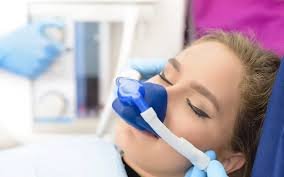For many, the whir of a dental drill or even the faint smell of antiseptic is enough to send heart rates soaring. Dental anxiety is real, and it’s one of the top reasons people put off treatment—sometimes for years. But modern dentistry has a quiet solution to all that fear: sleep dentistry. This isn’t science fiction; it’s a safe, medically supervised way to give people the confidence to reclaim their oral health.
Fear in the Chair: Why Anxiety Holds Us Back
It’s not just kids who dread dental appointments. Adults, too, often carry memories of uncomfortable treatments or simply fear the unknown. That anxiety doesn’t just create sweaty palms—it can lead to serious health consequences when people avoid routine check-ups and let small problems escalate into major procedures.
In fact, dentists increasingly see patients arriving with advanced decay, infections, or cracked teeth, all because they’ve avoided the chair for too long. It’s a vicious cycle: fear leads to neglect, neglect leads to bigger issues, and bigger issues mean scarier treatments. That’s where sleep dentistry steps in.
The Game-Changer: Enter Sleep Dentistry
Imagine walking into a dental practice and knowing you won’t feel the anxiety that usually bubbles up the moment you sit in the chair. With sleep dentistry, patients can undergo treatments in a deeply relaxed state, sometimes without remembering the procedure at all.
Whether it’s for a routine cleaning or a complex extraction, this approach creates a calmer, safer experience for anyone who struggles with nerves. More and more patients are discovering that they can finally access stress-free dental care with the help of sleep dentistry and keep their oral health on track.
Different Paths to Calm
Sleep dentistry doesn’t mean one-size-fits-all. Depending on the level of anxiety—or the type of procedure—different methods are used:
- Nitrous oxide (laughing gas):Gentle and quick, it eases nerves but wears off fast, letting patients drive themselves home.
- Oral sedation:Pills prescribed before the appointment help create a sense of calm.
- IV sedation:For deeper relaxation, this option is monitored closely by professionals.
- General anesthesia:Reserved for major procedures, where patients “sleep” through it all.
Each approach is designed to meet patients where they are on the anxiety spectrum, making dentistry more accessible and humane.
Life Beyond Fear
The benefits of sleep dentistry go well beyond a single appointment. For many, it’s the turning point in how they view oral care. Imagine no longer needing to cancel appointments out of dread, or finally saying yes to cosmetic treatments you’ve always wanted but avoided.
Patients often report feeling empowered afterward—like a weight has been lifted. They walk out of the clinic not only with healthier teeth but also with the realization that dental care doesn’t have to be traumatic.
Smiles Restored, Confidence Rebuilt
One of the most overlooked aspects of dental anxiety is how it affects self-image. People who avoid dentists often live with broken, stained, or missing teeth for years. This doesn’t just impact physical health but also self-esteem and social confidence.
Sleep dentistry changes that narrative. Suddenly, those long-delayed treatments become possible. Restorative work, whitening, implants—all are within reach without the looming shadow of fear. For many, it’s more than a dental solution; it’s a lifestyle shift.
When Families Benefit Too
Dental anxiety doesn’t live in isolation. Parents with phobias sometimes pass those fears on to their children, creating generations of nervous patients. But when a parent models calm, relaxed dental visits—thanks to sedation options—kids notice. Sleep dentistry, in this sense, isn’t just about easing today’s treatment. It’s about shaping healthier, braver habits for tomorrow’s patients.
A Lifestyle Upgrade in Oral Care
Think of it like upgrading your health routine. Just as people adopt mindfulness apps or ergonomic chairs to support well-being, sleep dentistry fits into a bigger picture of self-care. It allows people to treat oral health as part of a balanced, stress-free lifestyle rather than a dreaded necessity.
The ripple effects can be huge: fewer missed workdays from dental pain, more smiles in photos, and even improved systemic health, since untreated dental issues are linked to heart disease and diabetes.
Beyond the Chair
Ultimately, sleep dentistry is about more than sedation. It’s about giving people permission to take care of themselves without the baggage of fear. And for some, it opens the door to a completely new relationship with their oral health—one built on calm, trust, and positive experiences.
For those ready to take the leap, the journey doesn’t end with the first anxiety-free visit. It’s about fostering a lifetime of trust and proactive care—ensuring that healthy, confident smiles last for years to come.







